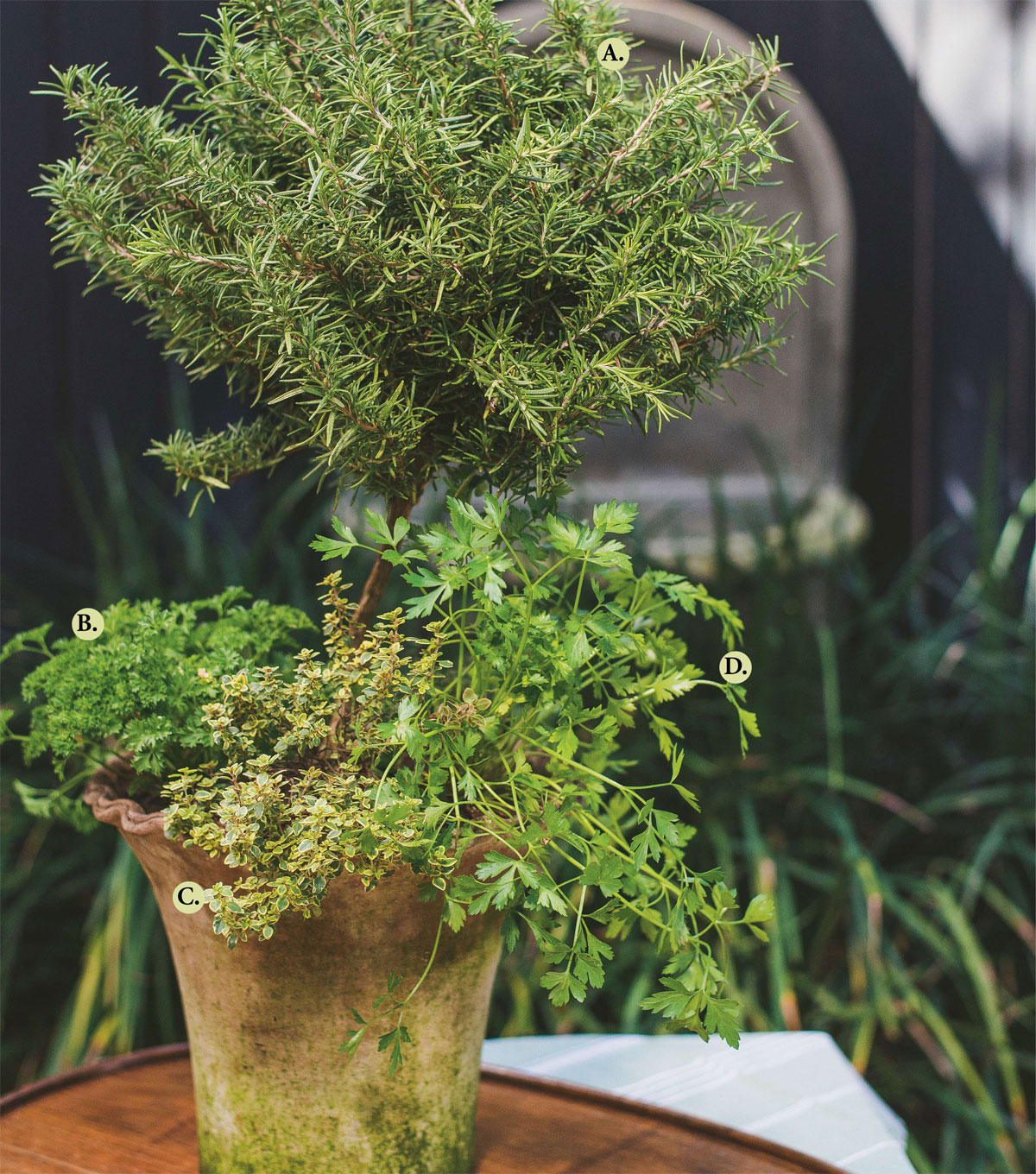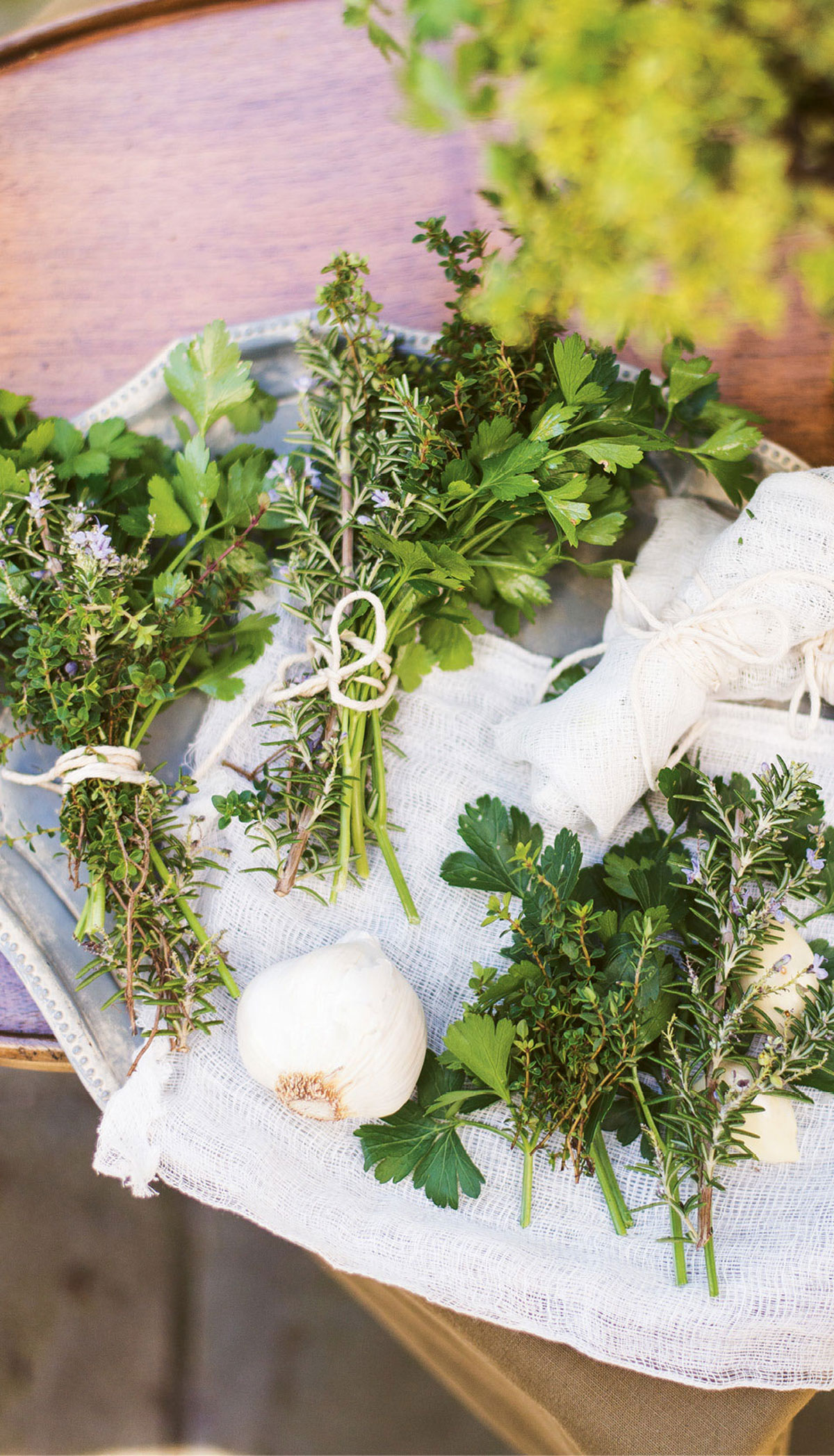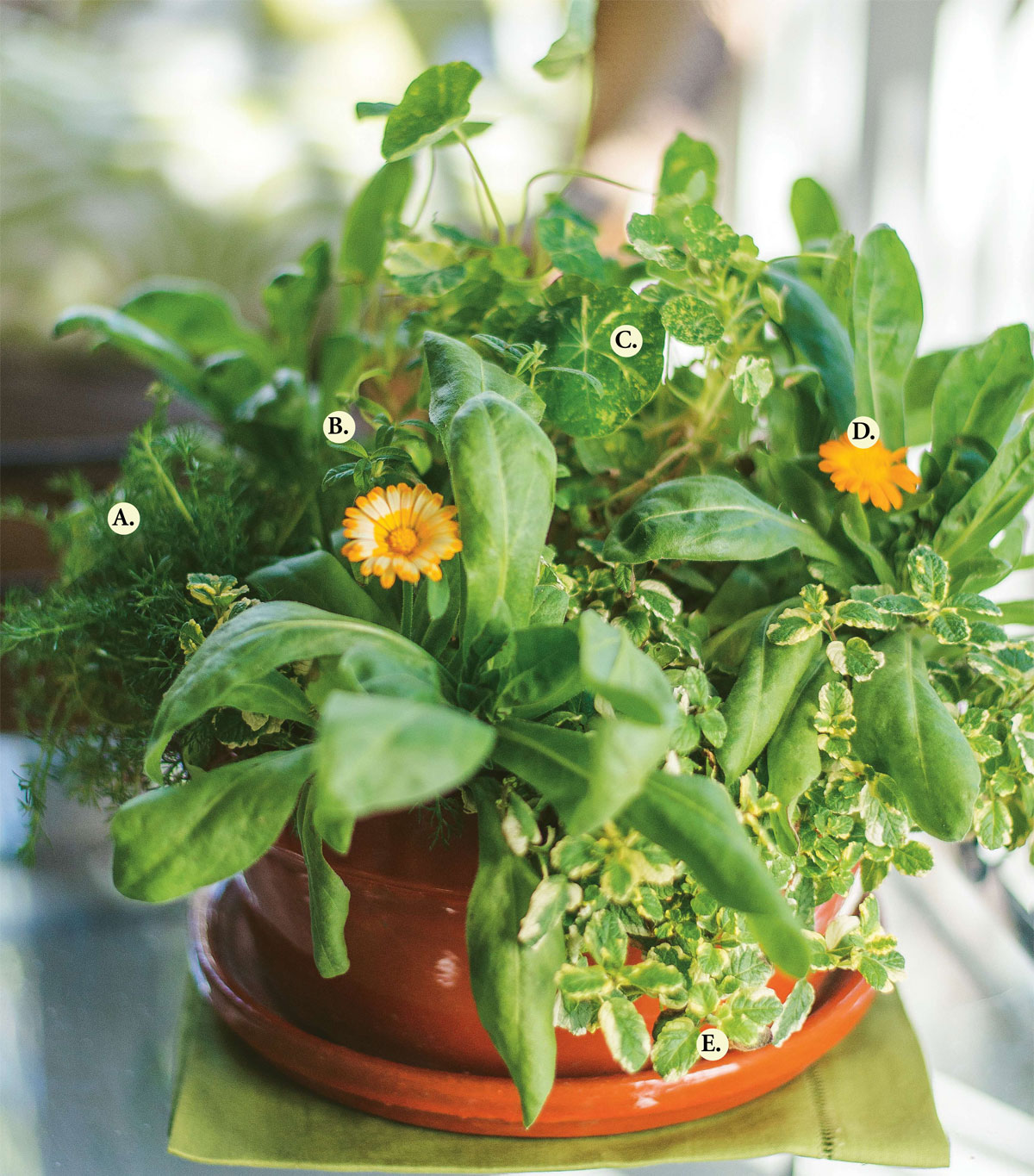
Citrus Splash
Craving refreshing lemony flavors? Even out of season, you can awaken your palate with a collection of aromatic, citrus-forward foliage. These stunners are easy to grow and elegant when planted in containers.
Plant Profile:
A. Lemongrass (Cymbopogon citratus)
B. Variegated calamondin (Citrofortunella mitis ‘Variegata’)
C. Sorrel (Rumex acetosa)
D. Red-veined sorrel (Rumex sanguineus)
E. Lemon thyme (Thymus citriodorus)
F. Lemon verbena (Aloysia triphylla)
G. Lemon balm (Melissa officinalis)

GARDEN-TO-PLATE DIY: Spring Citrus Salad Dressing
(Yields 1 cup)
1/2 cup olive oil
1/4 cup white wine vinegar
1/3 cup freshly harvested herbs: lemon balm, lemon thyme (remove leaves from woody stem), lemon verbena, lemongrass
1 clove garlic
1 Tbs. local honey
1 Tbs. Dijon mustard
2 Tbs. shallots
Salt & freshly ground pepper, to taste
Place all the ingredients into bowl of food processor and pulse until well combined. Store in a sealed container in the refrigerator for up to two weeks.
Serving suggestion: Add fresh sorrel leaves and sliced kumquats directly to the salad to brighten citrus flavor.

Channeling Julia Child
A staple in French cuisine, the bouquet garni can also serve as inspiration for a cook’s favorite garden container. Center this full-sun arrangement with a rosemary topiary, then underplant with the remaining herbs. When you need to add flavor to your soup or stock, a fragrant bouquet is just a snip away.
Plant Profile:
A. Rosemary (Rosmarinus officinalis)
B. Curley-leaf parsley (P. crispum var. crispum)
C. Lemon thyme (Thymus citriodorus)
D. Italian or flat-leaf parsley (P. crispum var. neopolitanum)
Not visible: French thyme (Thymus vulgaris)

GARDEN-TO-STOCKPOT DIY: How to Make a Bouquet Garni
The classic bouquet garni includes bay leaf, parsley, and thyme. Try your hand at this combination, or substitute various herbs, such as basil, chervil, garlic, and tarragon.
Supplies: Cheesecloth, kitchen string, herbs, and scissors
❶ Harvest herbs, such as rosemary, thyme, and parsley. As a general rule, it is fine to snip up to one-third of the plant’s overall size at a time.
❷ Unroll a layer of cheesecloth and place herbs in cloth.
❸ Fold cloth around herbs and secure with kitchen string. Note: Cut the string length according to the size of your stockpot and tie to the pot handle for easy retrieval.

Tea Time
This lovely table centerpiece, containing the main ingredients for a fresh herbal infusion, is a feast for the senses. And making a potful is as easy as snip, steep, and sip.
Plant Profile:
A. Chamomile (Matricaria recutita)
B. Lemon verbena (Aloysia triphylla)
C. Variegated nasturtium (Tropaeolum majus)
D. Calendula (Calendula officinalis)
E. Pineapple mint (Mentha suaveolens ‘Variegata’)

GARDEN-TO-CUP DIY: Herbal Tea
Steep your favorite cuppa with these or other easy-to-grow herbs
❶ Snip. Harvest the herbs in the morning when they will be most flavorful. One large handful of fresh herbs will make two cups of tea. To get started, try one-half handful each of mint and lemon verbena, three chamomile flowers, and one calendula flower.
❷ Steep. Bring a pot of water to boil, then reduce heat. Place herbs in a French press and fill with hot water. Let the herbs steep for 10 minutes.
❸ Sip. Press the plunger to strain herbs and pour into cup. Add fresh herbs such as calendula petals or nasturtium foliage for color. Sweeten as desired with local honey and stir with a piece of lemongrass. (The tea can also be served cold.)
❹ Harvest too much? There are many tools available to make the collecting and storage of herbs easier. For example, Herb Keepers will store your cuttings in the refrigerator in anti-bacterial glass to extend life up to two weeks.